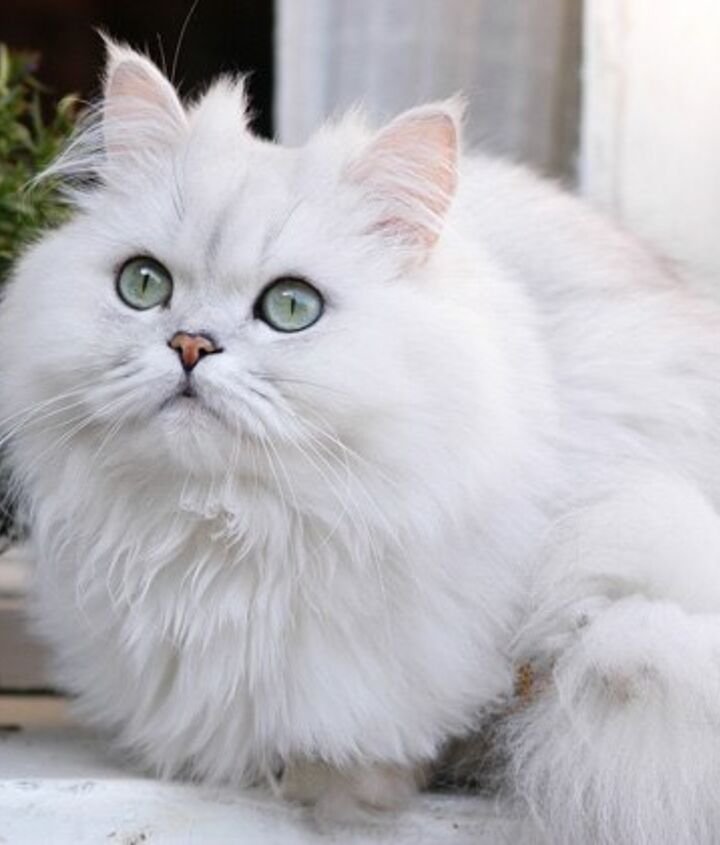Let’s embark on an intriguing comparison journey between two delightful creatures – chinchillas and Persian cats. While their appearances may initially suggest a world of difference, these unique animals surprisingly share astonishing similarities. From their captivating beauty to their luxurious fur, both chinchillas and Persian cats will undoubtedly leave you mesmerized by their adorable charm. So, buckle up and explore the enchanting world these fluffy companions have in common, as we delve into the wonders of comparing chinchillas and Persian cats.
Physical Characteristics
Fur
Chinchillas and Persian cats share a common feature when it comes to their fur – they both have luxurious and beautiful coats. Chinchillas have incredibly soft and dense fur, which comes in various shades like grey, beige, and white. Similarly, Persian cats have long, thick, and silky fur that requires regular grooming to keep it in optimal condition. Whether you cuddle with a chinchilla or stroke the silky fur of a Persian cat, you will surely appreciate the plushness and beauty of their coats.
Size and Body Structure
When it comes to size and body structure, chinchillas and Persian cats differ. Chinchillas are relatively small rodents, with an average length of around 9-15 inches and a weight ranging between 1-2 pounds. They have compact bodies, large eyes, and ears that help them adapt to their natural habitat. On the other hand, Persian cats are known for their large size, often weighing between 8-12 pounds. They have a stocky body with a short, broad head, and a distinctive pushed-in face. Despite their differences in size, both chinchillas and Persian cats possess an undeniable charm that captivates animal lovers from all over the world.
Origin and History
Geographic Origins
Chinchillas and Persian cats have different geographic origins. Chinchillas are native to the Andes Mountains in South America, where they inhabit rocky terrains and crevices. They have adapted to the cold, mountainous regions and are well-known for their ability to jump and navigate steep slopes. On the other hand, Persian cats are believed to have originated in Persia (modern-day Iran) and have a long history dating back to ancient times. They were highly regarded and kept by royalty, making their way to Europe in the 17th century. Both of these animals have rich histories and unique backgrounds that contribute to their overall appeal.
Breed Development
Chinchillas and Persian cats also differ in terms of breed development. Chinchillas are a distinct species within the rodent family, belonging to the Chinchillidae family. They have not undergone extensive breed development like cats and are primarily found in their wild or domesticated form. Persian cats, on the other hand, have gone through a significant amount of selective breeding to achieve their distinct appearance and personality traits. Over the years, breeders have worked to enhance the luxurious coat, round face, and calm temperament associated with Persian cats. The breed development of Persian cats has resulted in various coat patterns and colors that add to their allure.
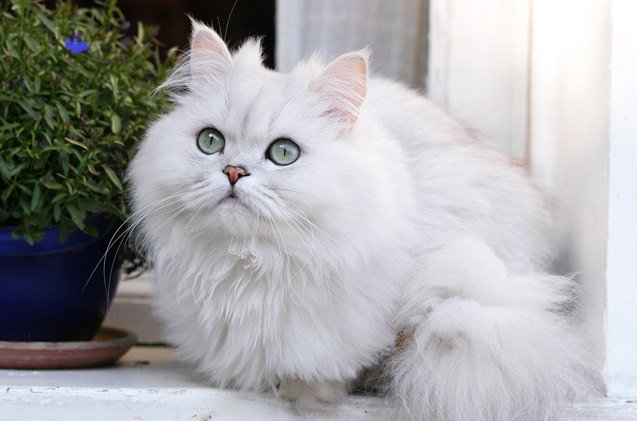
This image is property of cdn-fastly.petguide.com.
Temperament and Behavior
Activity Level
Chinchillas and Persian cats have different activity levels. Chinchillas are highly active animals and are primarily crepuscular, meaning they are most active during dawn and dusk. They are known for their agile and energetic nature, spending a significant amount of time climbing, jumping, and exploring their surroundings. On the other hand, Persian cats have a more relaxed and laid-back temperament. They enjoy lounging around and are generally content with a quieter and less physically demanding lifestyle. Both chinchillas and Persian cats, however, can form strong bonds with their human companions and provide endless entertainment with their unique behaviors.
Sociability
When it comes to sociability, both chinchillas and Persian cats have their own tendencies. Chinchillas are generally social animals that thrive in the company of their own kind. They are known to form strong bonds with their cage mates and enjoy interacting with humans, provided they are given proper socialization and handling from an early age. Persian cats, on the other hand, are typically more reserved and independent. While they can be affectionate and enjoy spending time with their owners, they also appreciate their alone time and may not always seek constant attention. Understanding and respecting the individual sociability needs of both chinchillas and Persian cats are essential for creating a harmonious bond.
Grooming Needs
Coat Maintenance
Both chinchillas and Persian cats require regular coat maintenance to keep their fur in optimal condition. Chinchillas have a dense and thick coat that has specific grooming requirements. Regular dust baths are crucial for chinchillas, as these help to remove excess oils and keep their fur clean and healthy. Persian cats, on the other hand, have long and silky coats that need daily brushing to prevent matting and tangling. Their coats are prone to matting due to their length and fine texture. Additionally, occasional bathing may be necessary for Persian cats to maintain their coat’s cleanliness and shine. Proper coat maintenance is essential for both these animals to ensure their fur remains lustrous and free from any health issues.
Bathing and Hygiene
When it comes to bathing and hygiene, chinchillas and Persian cats have their own requirements. Chinchillas should not be bathed with water due to their dense fur. Instead, they require dust baths, which mimic their natural behavior of rolling in volcanic ash to keep their fur clean. These dust baths help absorb excess oils and maintain the health of their fur and skin. Persian cats, on the other hand, require regular water baths to keep their long coats clean. It is important to use cat-specific shampoos and ensure thorough drying to prevent any skin irritation. Maintaining good hygiene practices, whether through dust baths or water baths, is crucial for the overall health and well-being of both chinchillas and Persian cats.
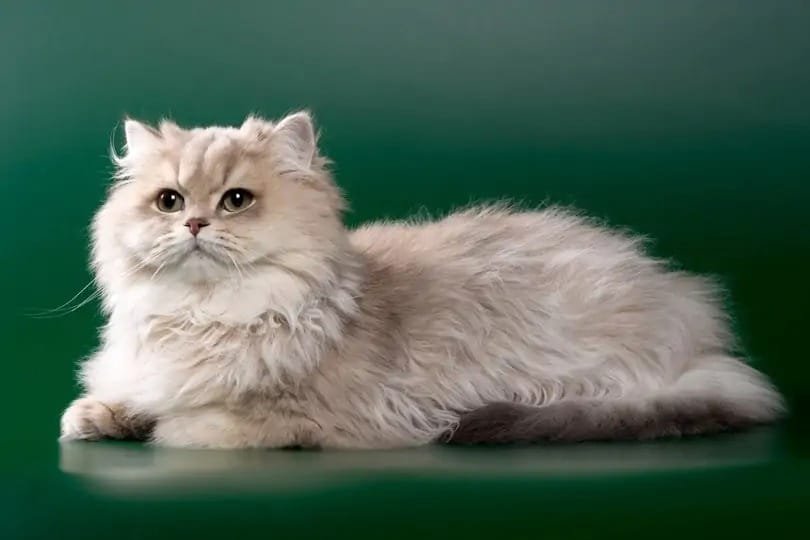
This image is property of www.catster.com.
Health Concerns
Common Health Issues
Chinchillas and Persian cats, like any other animals, are susceptible to certain health issues. Common health issues for chinchillas include dental problems, respiratory infections, and gastrointestinal stasis. Dental issues can arise due to their continuously growing teeth, and proper dental care, including a diet of chewable hay, is essential. Respiratory infections can occur if chinchillas are exposed to drafts or poor ventilation. Gastrointestinal stasis, a condition where the digestive system slows down or stops, can be a concern for chinchillas, primarily due to an improper diet or inadequate fiber intake. Persian cats, on the other hand, are predisposed to certain health conditions such as polycystic kidney disease, which can lead to kidney failure. Additionally, they are prone to respiratory problems due to their facial structure, as well as eye conditions like entropion and tear duct abnormalities. Regular veterinary check-ups and providing a healthy environment are essential in preventing and managing these health concerns for both chinchillas and Persian cats.
Genetic Predispositions
Certain genetic predispositions can impact both chinchillas and Persian cats. Chinchillas can be carriers of genetic mutations that result in various coat color variations, such as the rare “Pink White” mutation. It is important for chinchilla breeders to carefully select and breed animals to avoid potential health issues associated with specific mutations. Persian cats, on the other hand, can be predisposed to polycystic kidney disease (PKD). This inherited condition leads to the formation of fluid-filled cysts in the kidneys, potentially leading to kidney failure. Responsible breeding practices and genetic testing can help prevent the spread of these genetic predispositions and ensure the overall health and well-being of both chinchillas and Persian cats.
Dietary Requirements
Nutritional Needs
Chinchillas and Persian cats have specific nutritional needs to support their overall health. Chinchillas are herbivores and require a diet primarily consisting of hay, fresh vegetables, and high-quality chinchilla pellets. Hay, particularly timothy hay, is crucial for chinchillas as it aids in proper digestion and helps wear down their continuously growing teeth. Fresh vegetables provide essential vitamins and minerals for overall health. Persian cats, on the other hand, are carnivores and require a diet rich in high-quality animal protein. A balanced diet including meat-based cat food that meets their specific nutritional requirements is vital. Providing appropriate and species-specific diets is essential for promoting optimal health for both chinchillas and Persian cats.
Feeding Habits
Chinchillas and Persian cats exhibit different feeding habits. Chinchillas are grazers and have continuous access to hay throughout the day. They have a highly efficient digestive system that enables them to break down fibrous food. Chinchillas also benefit from occasional treats like dry fruits and a limited amount of pellets to ensure a well-rounded diet. Persian cats, on the other hand, are typically fed in specific portions and at designated meal times. Free-feeding may lead to weight gain, so it is important to monitor their portion sizes and give them high-quality cat food suitable for their age and health condition. Establishing regular feeding habits and providing appropriate quantities of food is crucial for maintaining optimal health for both chinchillas and Persian cats.
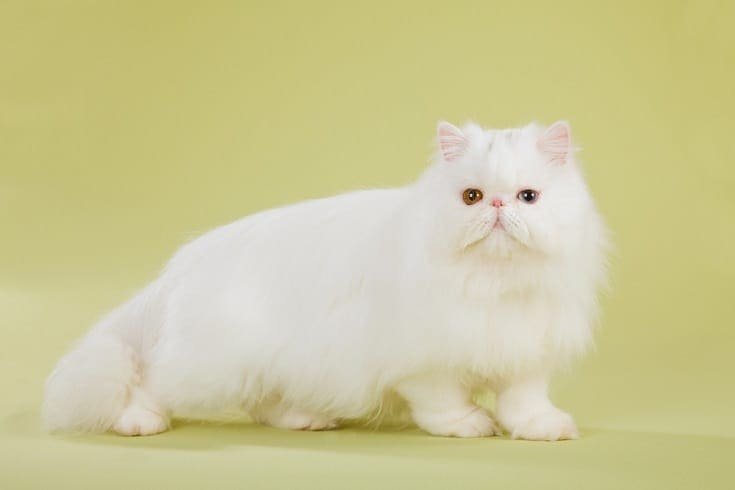
This image is property of www.catster.com.
Exercise and Play
Play Preferences
Chinchillas and Persian cats have different play preferences. Chinchillas are highly active animals and require ample opportunities for physical exercise and mental stimulation. They enjoy playing with toys that allow them to display their natural behaviors, such as climbing, jumping, and chewing. Providing tunnels, exercise wheels, and safe chew toys can keep chinchillas engaged and happy. Persian cats, on the other hand, typically have a more relaxed play style and may enjoy engaging in quieter, low-energy activities. They may prefer interactive toys, such as feather wands or puzzle toys, that stimulate their hunting instincts without requiring excessive physical exertion. Understanding and providing suitable toys and play options that cater to their preferences is essential for ensuring the overall well-being of both chinchillas and Persian cats.
Physical Activity Requirements
Chinchillas and Persian cats have varying physical activity requirements. Chinchillas require a significant amount of daily exercise to keep them mentally and physically engaged. They benefit from having spacious cages or enclosures that allow them to jump, run, and explore. Additionally, supervised exercise time outside of their cages, commonly known as playtime, is essential for them to stretch their legs and satisfy their natural instincts. Persian cats, on the other hand, have lower activity requirements and generally prefer short bursts of playtime followed by extended periods of relaxation. While they may not require as much physical activity as chinchillas, it is important to provide them with opportunities for play and exercise to prevent obesity and promote a healthy lifestyle. Assessing the individual physical activity needs of both chinchillas and Persian cats is crucial for ensuring their overall well-being.
Living Environment
Space and Housing
Chinchillas and Persian cats have different space and housing requirements. Chinchillas are active animals that require spacious and vertically oriented enclosures. A large wire cage with multiple levels, ramps, and shelves provides ample room for them to move around and exercise. Chinchillas are known to be skillful climbers, and their housing should accommodate their natural behaviors. Persian cats, on the other hand, benefit from having a quiet and designated space within the household. Providing cozy cat beds, scratching posts, and vertical spaces, such as cat trees, allows them to observe their surroundings and retreat to a safe space when needed. Both chinchillas and Persian cats thrive in environments that cater to their specific needs and preferences.
Ideal Living Conditions
Creating ideal living conditions for chinchillas and Persian cats requires attention to various factors. Chinchillas thrive in cooler temperatures (around 60-70°F) due to their natural habitat. It is important to provide proper ventilation and avoid exposing them to drafts or direct sunlight. Their housing should also be kept away from loud noises and potential stressors. Persian cats, on the other hand, prefer warmer indoor temperatures (around 70-80°F) to ensure their comfort. They are sensitive to extreme heat and should be provided with a cool environment during hot weather. Both chinchillas and Persian cats benefit from clean and hygienic living spaces, free from any potential hazards. Creating a safe and suitable living environment is vital in promoting the well-being and happiness of both these animals.
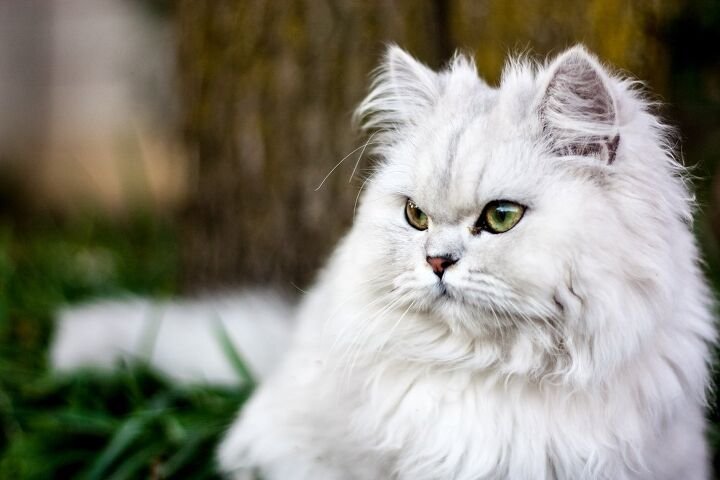
This image is property of cdn-fastly.petguide.com.
Interaction and Training
Trainability
While chinchillas and Persian cats differ in terms of trainability, both can be successfully trained using positive reinforcement techniques. Chinchillas are intelligent animals and can be taught various behaviors, such as coming when called or performing simple tricks, with patience and repetition. Training sessions should be short, focused, and end on a positive note, rewarding them with small treats or praises. Persian cats are known for their independent nature, which may make training more challenging. However, with gentle and consistent training methods, they can learn basic commands and respond to their names. It is important to create a positive and stimulating training environment for both chinchillas and Persian cats to ensure successful training experiences.
Communication Styles
Chinchillas and Persian cats have different communication styles, but they both rely on non-verbal cues to express their needs and emotions. Chinchillas communicate through a variety of vocalizations, such as chirping, barking, or purring, which can indicate their contentment, fear, or distress. They also use body language, such as flattened ears or raised fur, to communicate their mood. Persian cats, on the other hand, are generally quieter, but they also use a range of vocalizations, including meowing and purring, to express themselves. Body language cues, such as tail position or ear movements, are essential for understanding their emotions and intentions. Learning to interpret and respond to the communication styles of both chinchillas and Persian cats strengthens the bond between human companions and these delightful pets.
Popularity and Ownership
Breed Popularity
Both chinchillas and Persian cats are popular among pet owners for their unique characteristics and endearing qualities. Chinchillas have gained popularity as exotic pets due to their soft fur, entertaining behaviors, and relatively low maintenance requirements. Their appeal lies in their adorable appearance and playful nature, making them a sought-after choice for many animal lovers. Persian cats, on the other hand, have been a popular breed for decades, known for their elegant looks, calm temperament, and affectionate nature. They have remained one of the most popular cat breeds globally, captivating the hearts of many cat enthusiasts. The popularity of both chinchillas and Persian cats continues to grow, showcasing their undeniable charm and popularity among pet owners worldwide.
Ownership Statistics
Exact ownership statistics for chinchillas and Persian cats may vary, but their popularity as pets is evident. Chinchillas are often considered a niche pet, with an increasing number of households choosing to welcome them into their homes. The demand for chinchillas has prompted responsible breeding and ownership practices to ensure their welfare and long-term care. Similarly, Persian cats enjoy a significant popularity worldwide, and their ownership statistics reflect their desirability and appeal. It is important for potential owners to thoroughly research and understand the specific needs and requirements of both chinchillas and Persian cats, ensuring they can provide the commitment and care necessary for these beloved pets.
In conclusion, while chinchillas and Persian cats share some similarities, such as their luxurious coats, they also have distinct physical characteristics, temperaments, and care requirements. Whether you’re drawn to the energetic nature of a chinchilla or the serene presence of a Persian cat, both can make wonderful companions. Understanding their unique traits, providing suitable care, and creating a loving environment are key to enjoying a fulfilling relationship with these delightful animals.
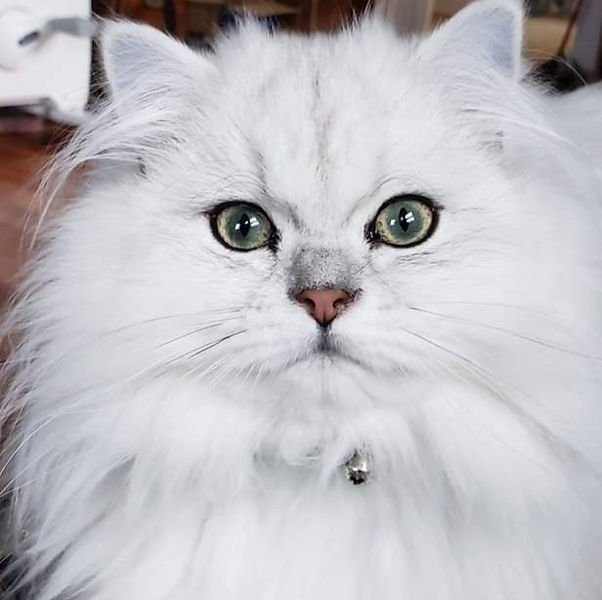
This image is property of static.wixstatic.com.

